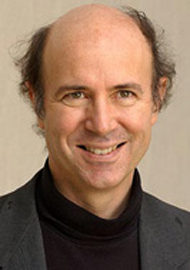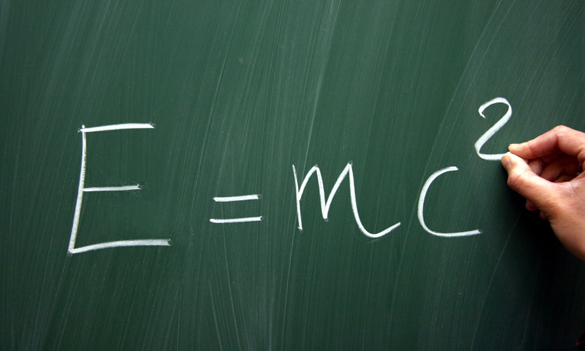08 Apr The Principle of Relativity – The Easy Way
In the entire history of physics there is no equation more famous than e = mc2. This relationship between mass (m) and energy (e) was derived in 1905 by Albert Einstein from his Principle of Relativity. The derivation wasn’t easy and merited a paper on its own, called “Does the inertia of a body depend upon its energy content?”. The equation continues to bewilder and mystify lay people, because in the usual particle picture of nature, it is hard to see why there is an equivalence between mass and energy.
In the meantime, a new theory called Quantum Field Theory was developed. QFT was perfected in the 1950’s by Julian Schwinger in five papers called “Theory of Quantized Fields”. In QFT there are no particles, there are only fields – quantized fields. Schwinger succeeded in placing matter fields (leptons and hadrons) on an equal footing with force fields (gravity, electromagnetic, strong and weak), despite the obvious differences between them. Further, Schwinger developed the theory from fundamental axioms, as opposed to Richard Feynman’s particle picture, which he justified because “it works”. Unfortunately it was Feynman who won the battle, and today Schwinger’s approach (and Schwinger himself) are mostly forgotten.
Yet QFT has many advantages. It has a firmer basis than the particle picture. It explains many things that the particle picture does not, including the many paradoxes associated with Relativity Theory and Quantum Mechanics, that have confused so many people. Philosophically, many people can accept fields as basic properties of space, as opposed to particles, whose composition is unknow. Or if there visualized as point particles, one can only ask “points of what?” And most of all, QFT provides an easy derivation and understanding of e = mc2, as follows.
Mass. In classical physics, mass is a measure of the inertia of a body. In QFT some of the field equations contain a mass term that affects the speed at which quanta of these fields evolve and propagate, slowing it down. Thus mass plays the same inertial role in QFT that it does in classical physics. But this is not all it does; this same term causes the fields to oscillate, and the greater the mass, the higher the frequency of oscillation. The result, if you’re picturing these fields as a color in space (as in my book “Fields of Color”), is a kind of shimmer, and the greater the mass, the faster the shimmer. It may seem strange that the same term that slows the spatial evolution of a field also causes it to oscillate, but it is actually straightforward mathematics to show from the field equations that the frequency of oscillation is given by f = mc2/h, where h is Planck’s constant.
Energy. In classical physics, energy means the ability to do work, which is defined as exerting a force over a distance. This definition, however, doesn’t provide much of a picture, so in classical physics, energy is a rather abstract concept. In QFT, on the other hand, the energy of a quantum is determined by the oscillations in the field that makes up the quantum. In fact, Planck’s famous relationship e = hf, where h is Planck’s constant and f is frequency, found in the centennial year of 1900, follows directly from the equations of QFT.
 Well, since both mass and energy are associated with oscillations in the field, it doesn’t take an Einstein to see that there must be a relationship between the two. In fact, any schoolboy can combine the two equations and find (big drum roll, please) e = mc2. Not only does the equation tumble right out of QFT, its meaning can be visualized in the oscillation or “shimmer” of the fields. Nobel laureate Frank Wilczek calls these oscillations “a marvelous bit of poetry” that create a “Music of the Grid” (Wilczek’s term for space seen as a lattice of points):
Well, since both mass and energy are associated with oscillations in the field, it doesn’t take an Einstein to see that there must be a relationship between the two. In fact, any schoolboy can combine the two equations and find (big drum roll, please) e = mc2. Not only does the equation tumble right out of QFT, its meaning can be visualized in the oscillation or “shimmer” of the fields. Nobel laureate Frank Wilczek calls these oscillations “a marvelous bit of poetry” that create a “Music of the Grid” (Wilczek’s term for space seen as a lattice of points):
“Rather than plucking a string, blowing through a reed, banging on a drumhead, or clanging a gong, we play the instrument that is empty space by plunking down different combinations of quarks, gluons, electrons, photons,… and let them settle until they reach equilibrium with the spontaneous activity of Grid… These vibrations represent particles of different mass m… The masses of particles sound the Music of the Grid.”
This QFT derivation of e = mc2 is not generally known. In fact, I have never seen it in the books I’ve read. And yet I consider it one of the great achievements of QFT.


Sorry, the comment form is closed at this time.